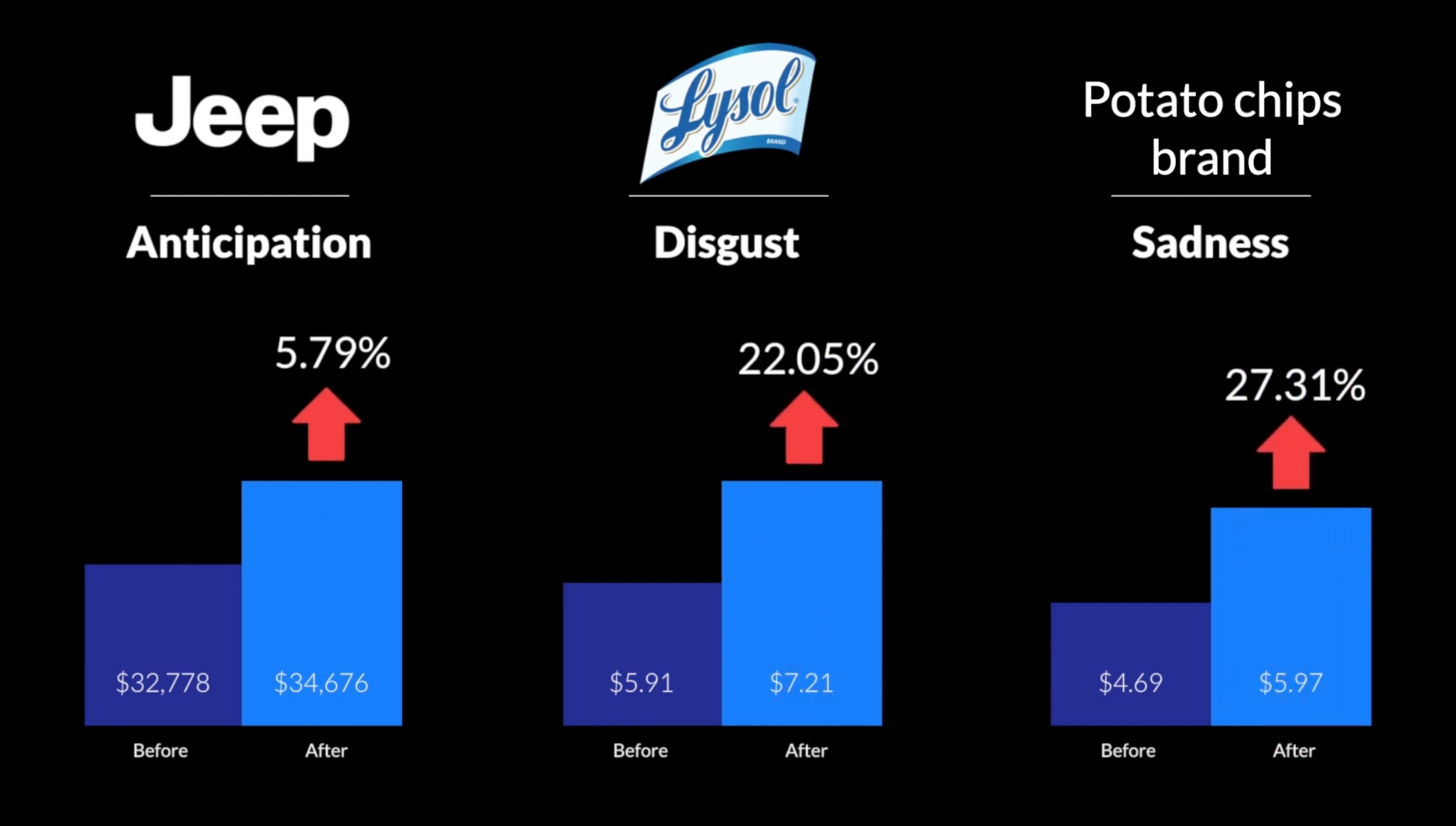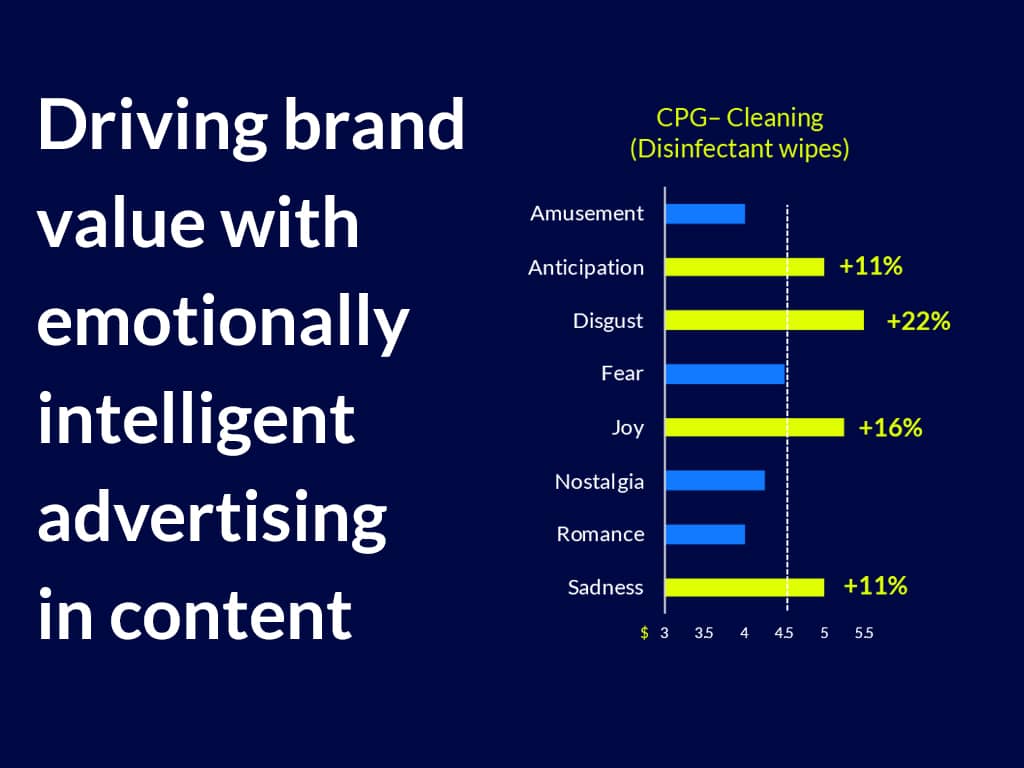
Ad targeting is a key strategy in the marketing arsenal, but it only goes so far. Messaging needs to constantly secure high relevance to truly cut through the noise or targeting cannot deliver the value it should. That’s where emotional intelligence comes in, integrating brands in content that evokes particular emotional responses to drive higher relevance and brand value.
Publishers are already working in this space. For example, The New York Times ( Project Feels ) and USA Today ( Lens Targeting ) have started indexing and selling ad adjacencies to content based on readers’ emotional responses.
At Mirriad, we embed brands directly into video content that’s contextually relevant. Our work across the globe has demonstrated outstanding effectiveness in engaging viewers. Now we are going beyond context by taking the first step toward data-driven emotional intelligence, a new paradigm that underpins marketers’ growing opportunity to connect with viewers in content.
To start this process, we commissioned an independent research study from neuroanalytics company SPARK Neuro to investigate how different emotions in content drive brand value across multiple categories. In Phase 1 of the study, 900 participants were surveyed online to perform a behavioral economics valuation task across eight different emotions. Next, the emotions with the greatest increase in brand value for three brand categories were further tested in a neuroanalytics lab. The study revealed astonishing results, opening up a range of new strategic considerations for brands willing to look beyond traditionally supportive environments.

For example, the study found:
- When a billboard for Jeep Wrangler was placed in a suspenseful hostage scene during an action drama, viewer “anticipation” prompted a 6% increase ($1,898) in perceived product value. In comparison, “joy,” prompted a 3.3% decrease in perceived product value in Phase 1 of the study.
- When Lysol disinfectant wipes were inserted in a gruesome scene, viewer “disgust” prompted a 22% increase ($1.30) in perceived product value. In comparison, “amusement,” spurred an 11.1% decrease in product value in Phase 1.
- When a potato chip brand was inserted into a very sad scene involving a mother and child, viewer “sadness” prompted a 27% percent increase ($1.28) in perceived product value. In comparison, “nostalgia,” scored an 11.1% decrease in perceived value of a similar food product in Phase 1.
For brands and their partners, these findings suggest the potential for significant opportunities to drive incremental value—even when the emotional placement seems to go against conventional thinking. “In the long run, marketers could collect data to develop powerful proprietary intelligence about the best emotional placements for their brands to outperform their competitors.
Using new in-content ad formats, brands can be placed into a broader canvas of multiple emotions, providing peak moments to connect with viewers. This is critical as viewers increasingly avoid or ignore traditional commercial breaks, while still staying emotionally invested in the content itself.

Here’s how different sectors in marketing and advertising can start to explore the benefits of emotional targeting:
Technology: Identifying emotional opportunities
For emotional targeting to succeed, technology companies will need to develop solutions that go beyond context and identify emotionally rich inventory available for brand insertions. Accurately indexing the emotions provoked by unique content moments will be a key prerequisite for doing so.
Creators: More moments for higher yield
Content owners that can offer a broad array of emotional amplitudes will be perfectly positioned for this new era. A TV series, for instance, relies on the peaks and troughs of dramatic narrative, with story moments that span the gamut of emotions. This creates a rich palette of responses to offer for exploitation and an opportunity to multiply the monetization potential beyond common denominators, averages and genres.
Brands: Emotional context vs. comfort zones
Emotional targeting will pose new challenges for advertisers. For example, the study found feelings of disgust and sadness to be effective emotions to tap into, but are brands willing to integrate their ads into those scenes? Yet, as our research shows, positive emotions don’t necessarily sell—emotional intensity does. The key is not to focus on just one emotion but to find the right mix of emotions for optimal engagements for your brand.
Agencies: More ways to create
Emotional targeting will also open a way for agencies to dive into some uncharted waters. Agencies can take advantage of emotionally rich environments to try new creative tactics that go hand in hand with content-driven emotional targeting—for example, in-content sequencing, product and brand message synchronization or, generally, the versioning of messaging to fit storylines.
Today, the industry—programming services, brands, agencies and technology companies such as Mirriad—is just starting to realize the full potential of emotional targeting. Eventually, as we push the boundaries on what’s considered “acceptable” to explore different emotional impacts across audiences, demographics and behaviors, we will discover even more opportunities and ways of connecting with people. Only then will we reach the age of dynamic emotional optimization in content.